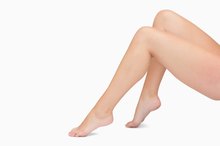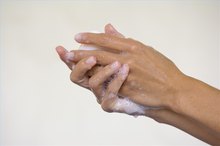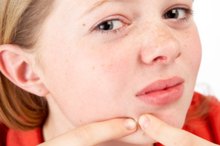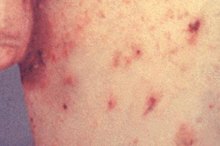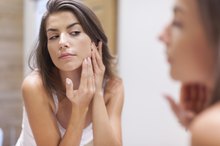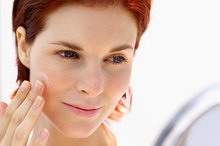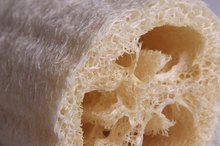What does fact checked mean?
At Healthfully, we strive to deliver objective content that is accurate and up-to-date. Our team periodically reviews articles in order to ensure content quality. The sources cited below consist of evidence from peer-reviewed journals, prominent medical organizations, academic associations, and government data.
- Department of Dermatology, Royal Prince Alfred Hospital, Camperdown, NSW: Compasitive Study on Tea Tree Oil
- Department of Dermatology, Royal Prince Alfred Hospital, Camperdown, NSW: Compasitive Study on Tea Tree Oil
The information contained on this site is for informational purposes only, and should not be used as a substitute for the advice of a professional health care provider. Please check with the appropriate physician regarding health questions and concerns. Although we strive to deliver accurate and up-to-date information, no guarantee to that effect is made.
How to Treat Acne Cysts
Acne can appear on the skin in many different forms, including blackheads, papules, pustules and cysts. When acne cysts appear, they can make the skin become swollen and painful, and can lead to facial scarring if left untreated. To effectively reduce and eliminate acne cysts, it is important to follow a skin care routine that helps bring the puss of the acne cysts to the surface of the skin, kills off acne-causing bacteria in the pores, and dries up the fluid and puss inside the cysts.
Apply steam to bring puss from the cysts to the surface of the skin. Place a bowl onto a flat surface, and fill it with boiling water. Drape a towel over your head, then lean 18 inches over the bowl. Allow the steam to cover your face for at least 5 minutes, then rinse off your skin with warm water. Repeat twice per day.
How to Clear Up Ingrown Hairs
Learn More
Apply a tea tree oil compress to kill bacteria inside the pores. Soak 5 cotton pads in water, then squeeze out the excess with your fingers, Drop 1 drop of tea tree oil onto each pad, and let it sit for 3 minutes to spread the oil around the pad. Place the pads onto your skin, allowing them to remain there for 5 minutes, then remove them and let your skin dry naturally. Repeat twice per day.
Spot treat the cysts with calamine lotion. Soap the end of a cotton swab in calamine lotion, then dab it liberally around the acne cyst 3. Let the lotion dry completely, and allow it to stay on your skin for up to 3 hours. Rinse off the calamine lotion with warm water. Repeat twice per day.
Tips
Steaming the skin forces the pores to open, and helps bring impurities that are trapped deep inside the pores to the surface of the skin. When steaming your face, it is important to lean no nearer than 12 inches over the bowl of hot water. Otherwise, the steam could scald your skin.
Acne cysts cause the skin to become more sensitive and inflamed than usual. Although benzoyl peroxide cream is one of the most common acne treatments, it can cause irritation when used on acne cysts. One way to prevent this is to use tea tree oil on the acne cysts, which the Department of Dermatology at Royal Prince Alfred Hospital suggests will eliminate acne as well as benzoyl peroxide.
Calamine lotion is usually used to reduce redness and dry up fluid from chicken pox blisters and a poison ivy rash. Because calamine lotion is a naturally soothing and effective in drying up fluid in the skin, it can also be extremely helpful in treating acne cysts. Calamine lotion is gentle enough to be left on the skin for up to 3 hours.
Related Articles
References
- AcneTreatmentGuru: Steaming the Skin
- Department of Dermatology, Royal Prince Alfred Hospital, Camperdown, NSW: Compasitive Study on Tea Tree Oil
- HealthGuidance.Org: Calamine Lotion for Acne
- National Cancer Institute. Cyst.
- Cleveland Clinic. Conditions which can be mistaken for tumors.
- Harvard Health. Cysts (overview). 2020.
- Zito PM, Scharf R. Epidermoid cyst (sebaceous cyst). StatPearls. Updated August 11, 2020.
- American Society for Surgery of the Hand. Ganglion cyst. Updated 2018.
- Frush TJ, Noyes FR. Baker's cyst: Diagnostic and surgical considerations. Sports Health. 2015;7(4):359-365. doi:10.1177/1941738113520130
- Office on Women's Health. Ovarian cysts. Updated April 1, 2019.
- American Cancer Society. Fibrosis and simple cysts in the breast. Updated September 10, 2019.
- Cleveland Clinic. Breast cysts: Management and treatment. Updated August 24, 2020.
- Díaz de la Noval B, García Fernández I, Álvarez Fernández B. Bulky Bartholin's gland cyst: Case report of an incidental finding. Case Rep Womens Health. 2019;22:e00115. doi:10.1016/j.crwh.2019.e00115
